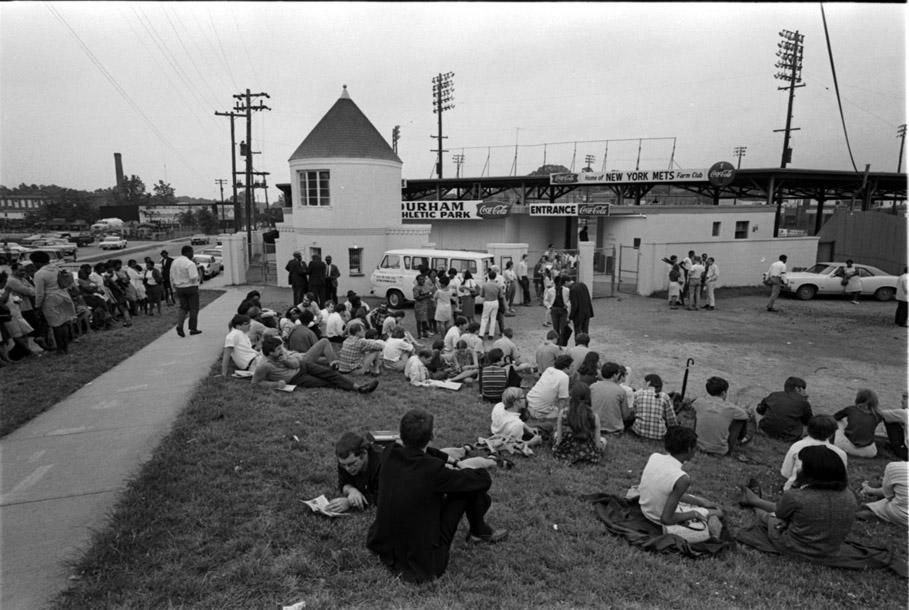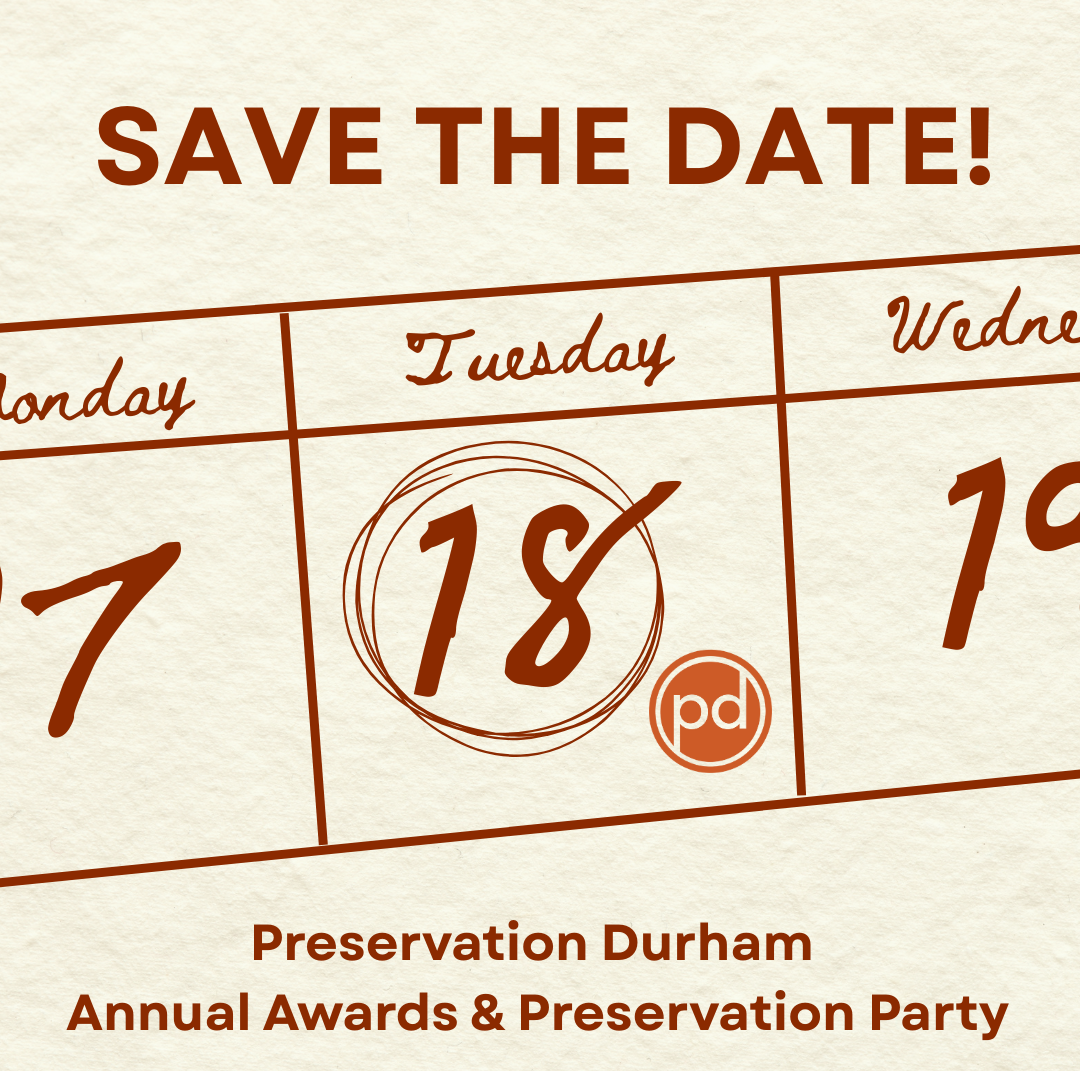Durham Athletic Park Feasibility Study Updates
Durham Athletic Park Feasibility Study Updates and Advocacy Alerts

UPDATED 11/7/2025
Yesterday, Julia Lasure, Preservation Durham's Membership and Programs Coordinator and Bob Ashley, Advocacy Chair and Board Member, spoke up in favor of the preservation option for the future of the Durham Athletic Park. This was presented at the city council work session yesterday, November 6th, as an update to the feasibility process.
After some discussion and public comment, city council directed city staff to move forward with further exploration of the preservation and restoration option, option one.
We are excited that this direction was given because we did not support the dramatic changes illustrated in the second and third options. However, we still have questions and concerns about what will be preserved, how they will be protected, how the history of the site will be adequately represented, and what changes will be needed to adapt the facility in any plans going forward.
We welcome the opportunity to open the field to the public, make it more accessible for events, and ensure it is of the greatest use for the Durham community.
While we are excited that preservation was identified as the preferred option, this process is not over and we encourage more public comment and support of this direction when this goes to the full city council meeting November 17th.
Thank you to everyone who submitted comments in support of preserving the DAP!
UPDATED 11/5/2025
An update on the community engagement and feasibility study will be presented at the City Council Work Session November 6, 2025. Materials are posted on the city's website here. Preservation Durham's response to the initial plans is below.
-----------------------------------------
Preservation Durham advocates for the preservation and continued public use of the historic Durham Athletic Park (DAP), a landmark deeply tied to Durham’s baseball and sociocultural history. As the City explores options for the site’s future to provide “the greatest benefit to the community,” it is essential that preservation remain the guiding principle, not a secondary consideration.
The DAP is one of Durham’s most iconic and culturally significant landmarks. Community feedback makes it clear that residents want to enhance and invest in what already exists, not replace it with something new.
Community Priorities
Results from the City’s own survey demonstrate overwhelming support for preservation:
- 2,611 residents responded.
- 44% (1,148) specifically emphasized the need to preserve the DAP’s unique historic features, more than any other theme.
- 29% (757) called for greater public access, achievable without a complete redesign.
- 28% (731) prioritized open space, which is the clear priority illustrated in the schematic designs.
These findings show that preservation is not a niche concern; it is the community’s clearest call and it is not reflected at all in the "Transformation" and "New Development" schemes.
Concerns with the Feasibility Study
The recent feasibility study treats preservation as a competing goal rather than an essential one. Preservation should not be framed as a tradeoff with public use or open space. It is the foundation that gives the site and surrounding Foster and Geer Street Historic District their meaning and identity. That district has already lost much of its working-class character over the past decade, making it even more important to protect what remains.
Yet the study fails to address the most fundamental questions:
- What problem(s) are we trying to solve?
- Does it truly require a costly redesign?
The DAP is already a unique, historic venue that can host a variety of community uses. Issues of underutilization or accessibility can be addressed through improved management agreements, better programming, and modest infrastructure updates, not through a $40–85 million rebuild.
Most concerning, the study does not clearly define the site’s future use. The concepts presented suggest that a heavily programmed public park was assumed from the outset, without transparent communication to the public or a genuine exploration of community priorities. An authentic feasibility analysis should have begun by identifying desired uses based on community input, followed by a conditions and needs assessment to determine what improvements would best support that vision.
Preservation Durham’s Recommendations
Preservation Durham urges the City to:
- Acknowledge that historic preservation was the top community priority identified in the survey and make it the guiding focus moving forward.
- Ensure that any future redevelopment or redesign retains the DAP’s defining historic features, including the 1939 grandstands, ticket booth, concession stand, and field.
- Engage a qualified preservation consultant to prepare a Historic Structures Report assessing current conditions and identifying character-defining features that must be protected.
- Pursue Local Landmark designation or commit to submitting all future design plans for a Certificate of Appropriateness (COA) review by the Historic Preservation Commission, ensuring compliance with the Secretary of the Interior’s Standards.
- Prioritize activation and access through creative management and partnership agreements rather than a costly rebuild that risks eroding the park’s historic integrity.
Our Commitment
Preservation Durham will continue to make efforts to engage directly with City staff and the feasibility team, advocate for public support, and share the DAP’s rich history to strengthen community connection. Our organization offers historical expertise, preservation guidance, and opportunities for the public to help shape the park’s future.
Durham deserves a plan that honors the DAP’s past while inviting new generations to experience it. Preservation is not a constraint. It is the community’s clearest call and the City’s greatest opportunity.




